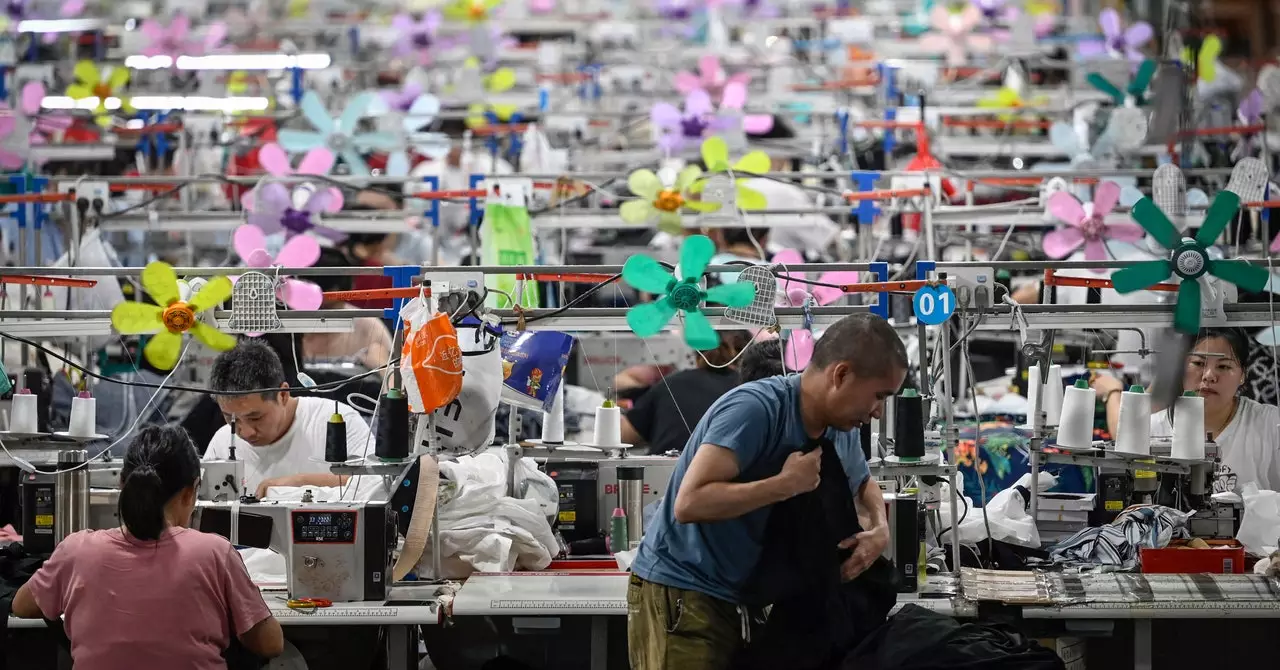In the world of fashion, few names have created as much buzz or controversy as Shein. Dominating the fast-fashion scene in 2023, the company has become synonymous with affordable, trendy clothing, rapidly delivering products across the globe. Yet, as Shein’s popularity soars, so too do the questions surrounding its sustainability practices.
Emerging from its inception just over a decade ago, Shein’s meteoric rise is attributed to its efficient supply chain and strong digital marketing strategies. The company’s ability to introduce trendy apparel at prices as low as $10 has resulted in a staggering array of options for consumers, with approximately 600,000 items for sale at any given moment. The unprecedented speed at which Shein churns out new designs—reportedly taking as little as ten days from idea to product—has positioned it as a disruptive force in the fashion industry. This rapid production cycle generates significant consumer interest, reflected in Gen Z’s increasingly frequent purchases from the retailer.
Nevertheless, Shein’s operational model raises critical environmental concerns. As its production flourishes, the substantial carbon footprint generated from shipping and manufacturing poses serious questions. The company’s recent sustainability report highlighted an alarming statistic: a staggering 16.7 million metric tons of carbon dioxide emissions in 2023, equivalent to the output of four coal power plants in just one year.
Central to Shein’s operational prowess is its reliance on artificial intelligence (AI). Utilizing proprietary machine-learning applications, the company analyzes customer preferences to gauge demand in real time. This adaptation not only boosts efficiency but also accelerates their already rapid supply chain. While AI contributes to Shein’s impressive business model, it generates additional scrutiny regarding the environmental impact associated with “ultra-fast fashion.”
Experts contend that the very algorithms enhancing Shein’s capacity to distribute cheap clothing may exacerbate its sustainability challenges. The swift turnover of fashion trends, powered by AI, may lead to increased waste and resource exploitation, further intensifying the brand’s carbon emissions. Statements from environmental advocates underline a pressing concern within the industry: that striking a balance between profitability and ecological responsibility is increasingly untenable.
Although Shein has made public commitments to reduce its carbon emissions by 25% by 2030 and to achieve net-zero emissions by 2050, skepticism remains prevalent. Environmentalists argue that the brand’s current trajectory contradicts these pledges. The growing emissions and problematic labor practices—coupled with rampant textile waste and microplastic pollution—paint a complex picture that many argue is unsustainable.
Sustainability advocates assert that for every item produced, there exists a ripple effect of environmental degradation that must be addressed. As the fashion industry grapples with its ecological footprint, companies like Shein are urged to conduct genuine assessments of their supply chains, address waste management issues, and develop more eco-friendly practices.
Shein’s case is not isolated; it exemplifies a larger trend within the fast-fashion industry that increasingly prioritizes speed and profitability over environmental responsibility. As other brands like Temu begin to emerge and mimic Shein’s model, the ecosystem of fast fashion continues to expand, prompting an urgent conversation about the future of sustainable clothing.
Transforming the fast-fashion landscape will require significant shifts in both consumer behavior and corporate accountability. As consumers become more aware of the consequences of their shopping habits, a potential shift toward sustainable practices seems not just desirable but essential.
In an age where fashion and technology intersect, brands like Shein stand at a crossroads. The challenge is clear: to reconcile the demand for fast, affordable fashion with the imperative of environmental stewardship. Whether Shein and its contemporaries can adapt to this reality, balancing their innovative practices with a commitment to sustainability, remains to be seen. The current trajectory suggests a critical reevaluation is necessary, both for Shein’s future and for the well-being of the planet itself.

